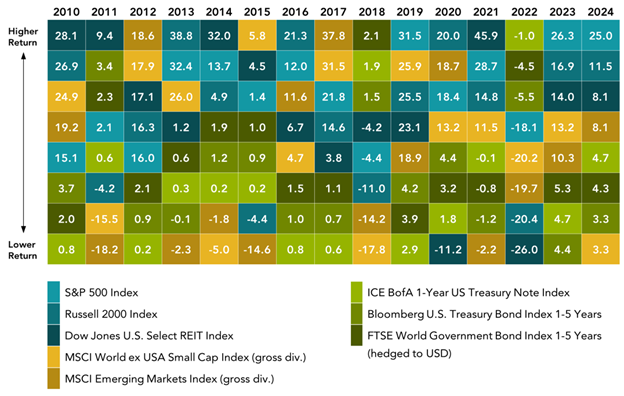
Is all of, or most of your portfolio only in the S&P 500? The S&P 500 is made up of larger US companies (typically greater than $20 billion market capitalization).
If your portfolio is only U.S. large-cap stocks, you might be missing big opportunities — and taking unnecessary risk.
• In the last 15 years, the S&P 500 was the top-performing asset class only 3 times — and 2 of those years were in 2023 & 2024.
• Before 2023? The top performing asset class only once since 2010.
• From 2000–2009 (the “lost decade”), the S&P 500 had a negative return.
• Emerging Markets: +9.78% annualized
• U.S. Small Cap Value: +8.27% annualized
• U.S. Large Cap Value: +2.47% annualized
• International Developed: +1.63% annualized
I’m not going to disagree that the S&P 500 has pretty much CRUSHED everything in its path over the last 10 – 15 years, what I am saying is that there have been periods of time where it’s significantly lagged other asset classes.
We don’t want our clients to only be exposed to a singular country or asset class – this can dramatically hinder your portfolio, especially if you are taking distributions from your accounts.
You need a customized investment approach that aligns with your goals, tolerance, and time horizon.

Choosing to retire is one of the most important decisions someone can make in their lifetime. Read this article to learn about all the things you should consider prior to making this life-changing decision.
Stock pickers underperform the market long-term. Learn why diversification and disciplined investing still win.
Are you a tech employee with an equity compensation plan? If you want to learn more details about RSUs, ISOs, NSOs, & ESPPs, take a look at this article.